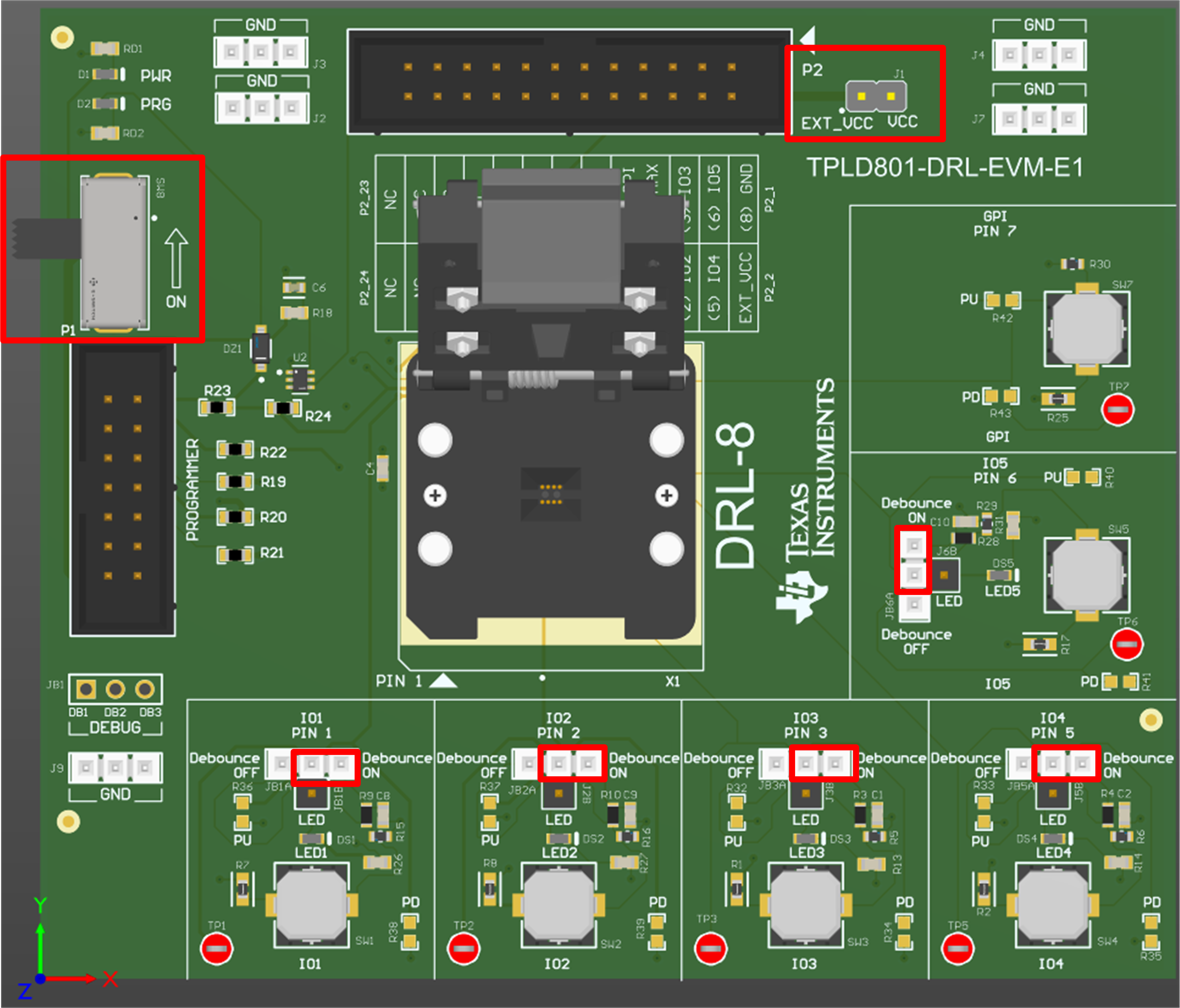SCEU031B August 2024 – October 2024 TPLD801
PRODUCTION DATA
3.2.1 TPLD801-DRL-EVM Setup for Programming
Make sure that the following conditions are met:
- Set SW8 to the ON position.
- Make sure that all SW/LED testing blocks are NOT set to Debounce On.
- Make sure no pull-up or pull-down resistor is installed on the GPI block.
- Remove the EXT_VCC (J1) shunt.
- Disconnect P2 from any external system.
 Figure 3-2 Components Considered in
Programming Setup
Figure 3-2 Components Considered in
Programming Setup